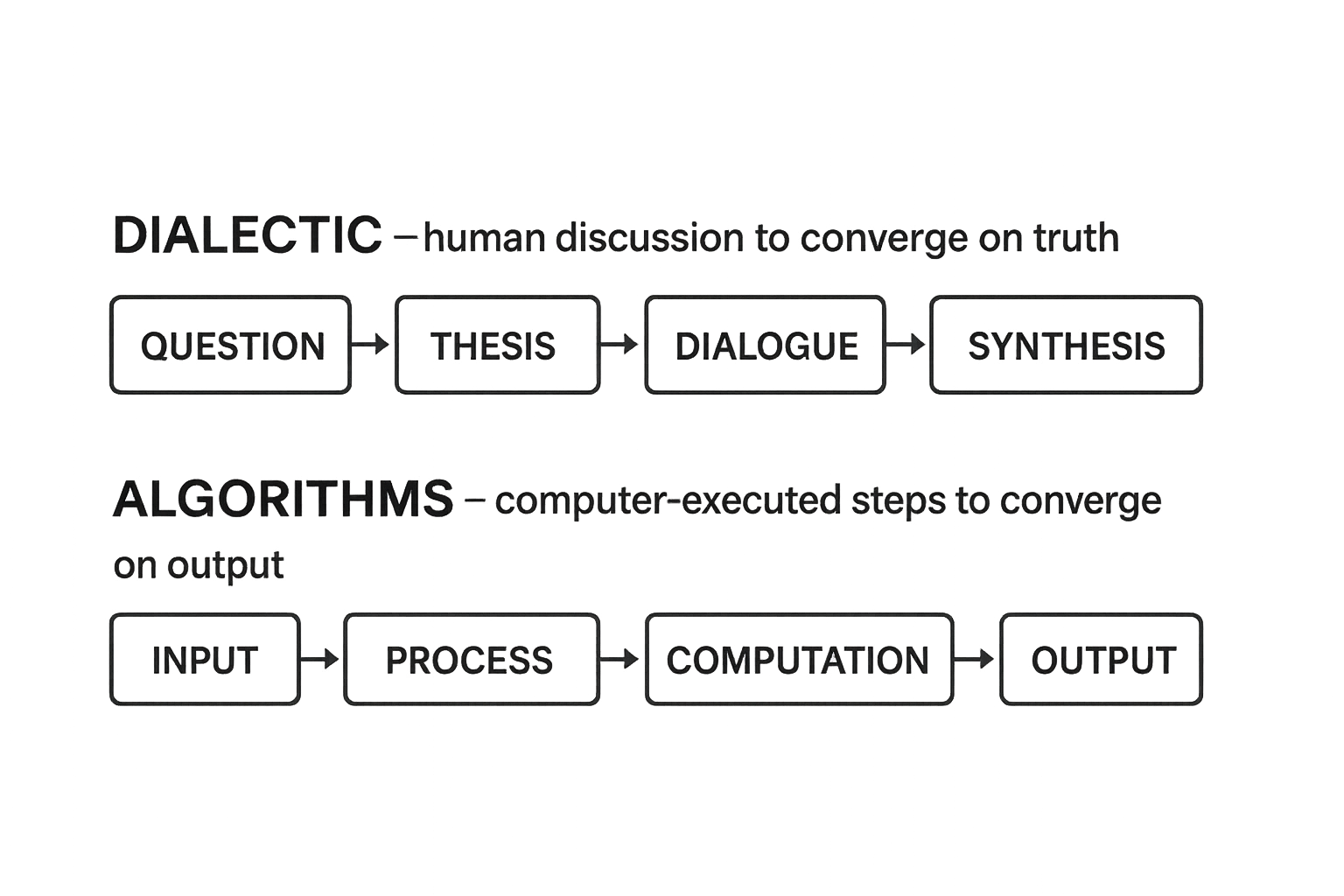
In my recent re-reading of Plato’s The Republic, the metaphor of a bridge spanning the visible world of sense perceptions, as governed by space and time, and the invisible world of perfect forms felt particularly resonant. It offers a clear analogy to how we might improve AI systems in the pursuit of what could be called “true” intelligence.
This bridge evokes the parallel between dialectic and algorithms. Dialectic is a distinctly human process: a dialogue that tests and interrogates ideas to uncover deeper truths. Algorithms, by contrast, are sequences of computational steps designed to produce a conclusion or output.

This analogy also extends naturally to modern machine learning techniques.
Models that utilize Stable Diffusion and Attention-based retrieval do not simply “learn” in a single epoch. Instead, they arrive at an understanding + generate conclusions through incremental refinements. Layers of training allow for the gradual surfacing of latent patterns and relationships in the data.
These computational and philosophical methods share a genealogy grounded in process. Each advances step-by-step toward some approximation of truth.
The relativistic nature of human intelligence requires such methods for us to all agree on objective (or as close to objective) facts and truths based either on observation or coherent theories.
As AI systems grow increasingly capable of reasoning, the boundary between philosophical and computational processes begins to blur. Reasoning itself becomes a modular component, a link, in a chain of processes that mirrors the cognitive pathways humans follow to arrive at outcomes and judgments.
If that’s the case, then the study of dialectic and philosophical method isn’t just a metaphor, it may be the key to improving reasoning and machine learning mechanisms for training and production AI systems that incorporate human feedback. Perhaps even training on structured philosophical debates could yield unexpected benefits that augment AI’s ability to produce outputs with greater depth, nuance, and alignment to human expectations.
Now, the question can be posed: What might lie beyond dialectic?
Subscribe to my blog
Get new posts delivered directly to your inbox.
Enjoy this post?
Subscribe to get new content in your inbox.

